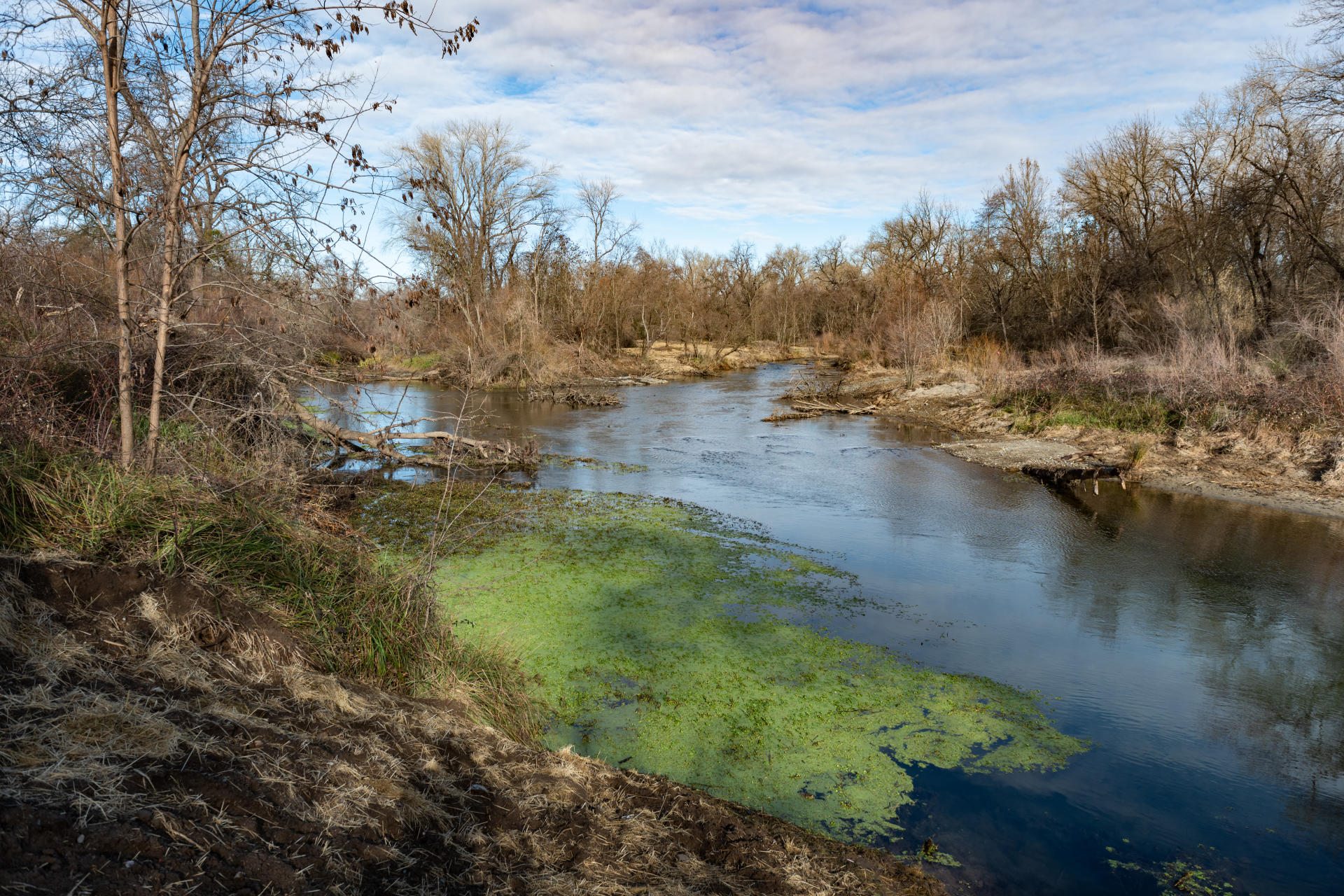Chico State Enterprises Receives $10 Million Grant to Continue Salmon Habitat Restoration Projects

The President’s office joined other representatives on site at a recently completed restoration project along the Sacramento River at the Anderson River Park which created miles of improved, year-round spawning habitat for critically endangered salmon on Friday, January 10, 2020 in Anderson, Calif. Salmon populations up and down the state, including in North State, are headed toward extinction due to habitat destruction and, increasingly, the impacts of a changing climate. The University is committed to growing community partnerships with diverse stakeholders to make tangible, lasting difference regionally and statewide for people, the environment, and economy. (Jason Halley/University Photographer/CSU, Chico)
A research team from California State University, Chico will continue its exceptional work to re-establish juvenile salmon and salmonid habitats along the Sacramento River, after learning it would continue to be funded by the United States Bureau of Reclamation.
Chico State Enterprises received a $10 million grant over five years to help restore 47.3 acres of juvenile salmon habitat and 4.3 acres of spawning habitat along the Upper Sacramento River. Susan Strachan, the restoration’s project manager from the University’s Geographical Information Center, credits much of the work’s success thus far to the project’s partners, which include the Sacramento River Forum, the California Department of Water Resources, River Partners, the Yurok Tribe, Tussing Ecological Sciences and the Pacific States Marine Fisheries Commission.
“We are so thankful for our partnership with Reclamation and our state, local and nonprofit collaborators who make these projects successful,” Strachan said. “We look forward to implementing more habitat restoration and a robust monitoring program for the benefit of Chinook salmon and steelhead on the Upper Sacramento River.”
Nearly five years ago, a CSU, Chico research team led by Mandy Banet, an aquatic ecologist in the Department of Biological Sciences, joined a multi-agency project—funded by a $16.9 million grant—to re-establish juvenile salmon and salmonid habitats along the Sacramento River. The new round of funding will continue the program that has been developed pursuant to a scientific advisory group, while adding a component to assess the occupancy and residency time of the restored habitats by juvenile salmon.
“As the data continues to develop, the program will be working with design engineers on a feedback loop that documents the project elements being utilized by the juvenile salmon so that designs can maximize their potential for success,” Strachan explained.
The restoration projects follow a workflow that includes project identification, reconnaissance, planning and design, construction and monitoring. The multi-agency collaboration working to implement these restoration projects on the Upper Sacramento has had significant success over the past four years—with seven projects completed thus far, three currently underway and one scheduled in 2021, the final year of the existing funding agreement. The new round of funding comes just in time, since a continuation of the projects is vital to their success.
“The timeline to develop these projects and get them ready for implementation is typically one to two years, so other sites are in the queue with tasks such as botanical assessments, surveying and pre-project monitoring completed,” Strachan said. “A break in funding can mean that the projects are delayed and lose momentum.”
These side channels are vitally important habitat for juvenile Chinook salmon and steelhead, and the flow changes have particularly impacted the critically endangered winter run Chinook salmon. However, continued success in the side channel restoration projects could see a positive impact on the economy, recreation, culture and the environment.
Strachan notes that the research and projects would not be possible without the generosity of the federal grants.
“We appreciate the leadership and sustained commitment of the US Bureau of Reclamation and the US Fish and Wildlife Service’s Central Valley Project Improvement Act program that have enabled us to accomplish these projects,” she said.


